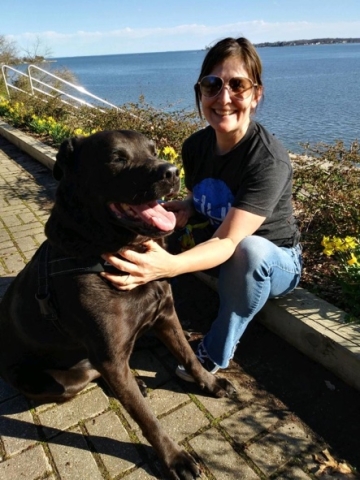Greetings Earth to Sky Community,
Have you ever wondered why Europe has such a warm and pleasant climate for most of the year? Why, for example is London 25 degrees warmer on average than Winnipeg in the winter, despite being on the same parallel!? Or why surfing in the summer at Santa Cruz requires a wet suit when a bikini will do just fine at Virginia Beach, again same line of latitude!
Ocean Literacy Principle #3 tells us that, “The ocean is a major influence on weather and climate.” This Climate In Your Pocket dives into that relationship, how the interplay between the ocean and atmosphere drive local weather patterns and set the global climate. Join us as we explore this relationship with a hands-on demo, learn why it’s important for NASA to measure sea ice, and what this means for all of us on the local level.

NASA’s Outreach Lead for the ICESat-2 mission, Valerie Casasanto, explains the Global Thermohaline Circulation system (GTC), a globe-spanning current that plays a key role driving our climate, acting as a giant heat pump and conveyor belt in our oceans. Valerie helps us better understand this system and then replicates it for us in a hands-on experiment! It’s a great activity for children and adults to get this important climate concept across. This demo, an easy to reproduce hands-on experiment using everyday items that explain the GTC, shows its relation to sea ice in the poles, and helps us understand why we should care about measuring ice elevation using ICESat-2.
Finally, our discussion time focuses on the GTC’s effects on people and ecosystems both along our coasts and inland, and how the choices we make have a global impact!
Bio
Valerie Casasanto is the Outreach Lead for NASA’s ICESat-2 (Ice, Cloud, and land Elevation Satellite-2) mission at the NASA Goddard Space Flight Center (GSFC) in Greenbelt, MD. ICESat-2, was launched September 2018, and is currently taking precise height measurements of the Earth’s polar regions, land heights, tree heights and more using laser technology to track changes to melting glaciers and sea ice. Ms. Casasanto has led public engagement and communications efforts for the ICESat-2 mission since 2014.
is the Outreach Lead for NASA’s ICESat-2 (Ice, Cloud, and land Elevation Satellite-2) mission at the NASA Goddard Space Flight Center (GSFC) in Greenbelt, MD. ICESat-2, was launched September 2018, and is currently taking precise height measurements of the Earth’s polar regions, land heights, tree heights and more using laser technology to track changes to melting glaciers and sea ice. Ms. Casasanto has led public engagement and communications efforts for the ICESat-2 mission since 2014.
Formerly, Ms. Casasanto was PI for the NASA award, Beautiful Earth: Experiencing and Learning Science in a New and Engaging Way, to inspire and engage students and the general public in NASA Earth Science through music, visual arts, and indigenous perspectives. She has more than 20 years of experience in designing, and implementing earth and space science educational programs to diverse age groups in multicultural environments. She has an extensive history in microgravity experimentation on the Space Shuttle, sounding rockets, parabolic aircraft, and ISS. She developed the first commercial hands-on student microgravity experiments program on the Space Shuttle involving thousands of students (elementary-University) to inspire and engage them in STEM. She has managed and integrated student designed and PI science microgravity payloads on 15 space missions.
Ms. Casasanto is member of the IAF Space Education & Outreach Committee (since 2002), member of GSFC’s Education Implementation Team (since 2006), and member of GSFC’s Native American Employee Resources Group (since 2008).
Useful Links
- ICESat-2 https://icesat-2.gsfc.nasa.gov/
- Motion in the Ocean Demo Video https://www.youtube.com/watch?v=LDCSY7WffLw
- Aquarius Ocean Circulation Video https://gpm.nasa.gov/education/videos/aquarius-ocean-circulation
- Global Thermohaline System Visualization https://svs.gsfc.nasa.gov/3658
- Ocean Circulation Visualizations https://svs.gsfc.nasa.gov/3829
- NASA Ocean Motion Website http://oceanmotion.org/
- Ocean salinity and ocean currents: https://science.nasa.gov/earth-science/oceanography/ physical-ocean/salinity.
- NASA satellite missions ICESat-2 (2018 to present) that measures ice elevation, https://icesat-2.gsfc.nasa.gov/ and Aquarius (2011-2014) https://www.jpl.nasa.gov/missions/aquarius, which measured sea surface salinity.
